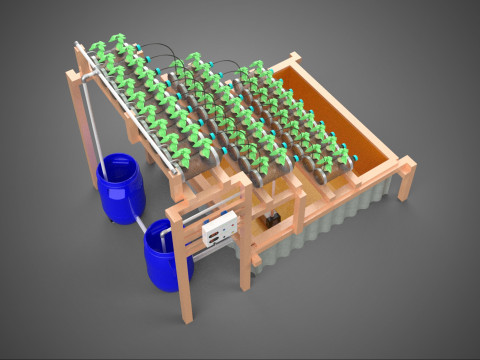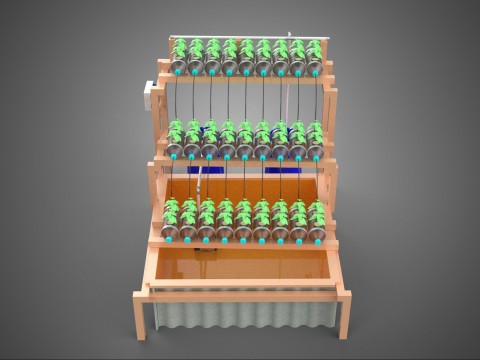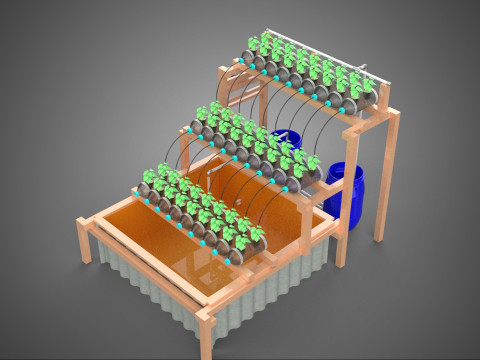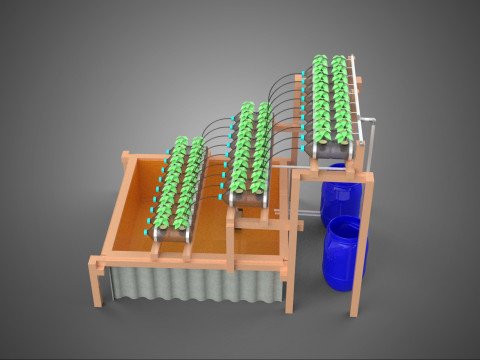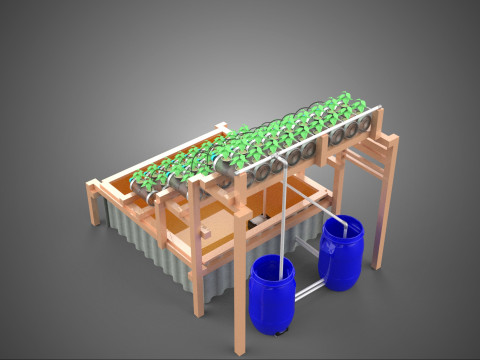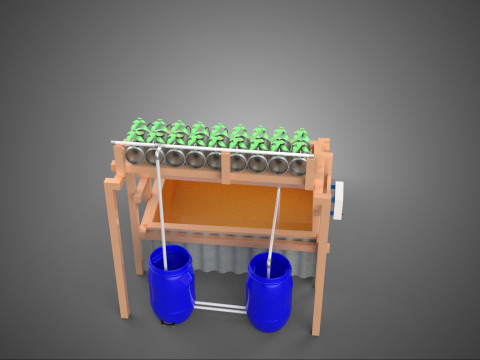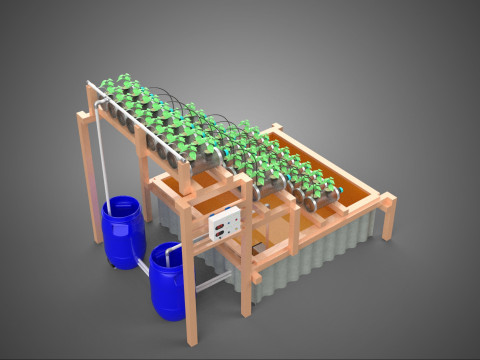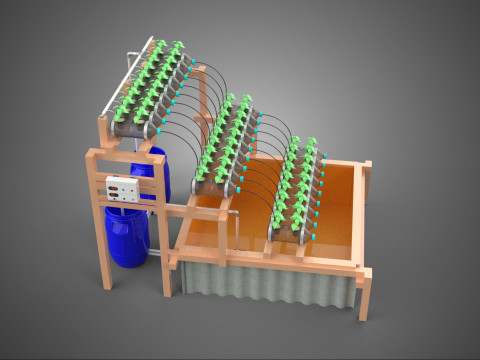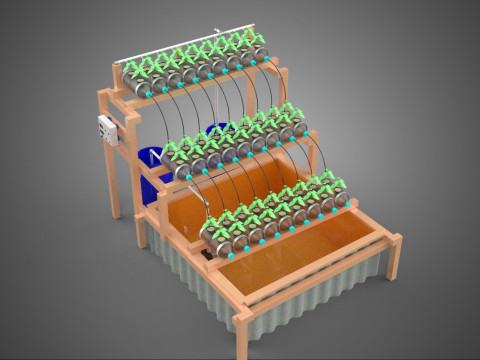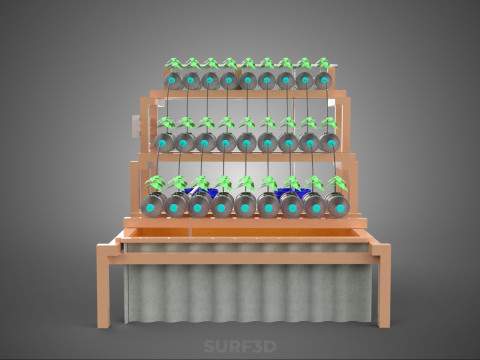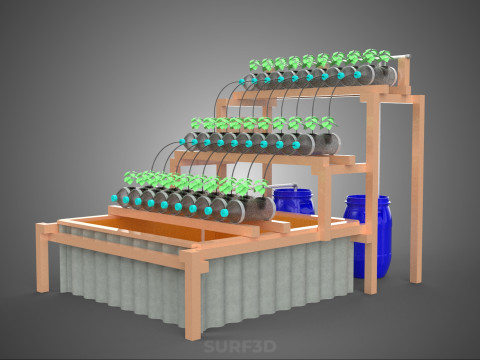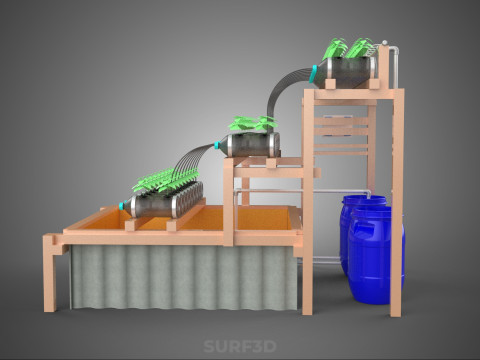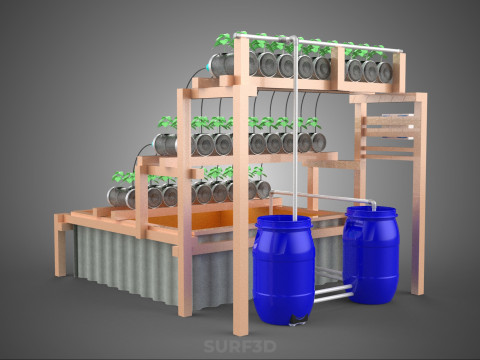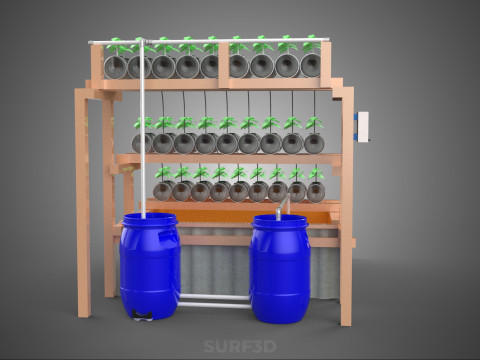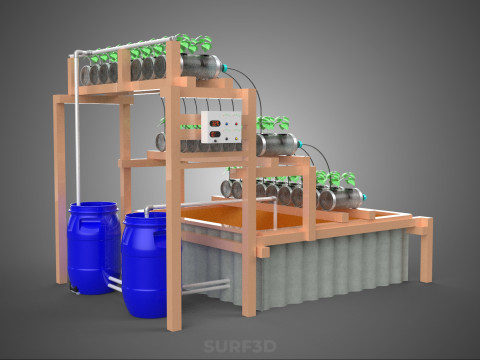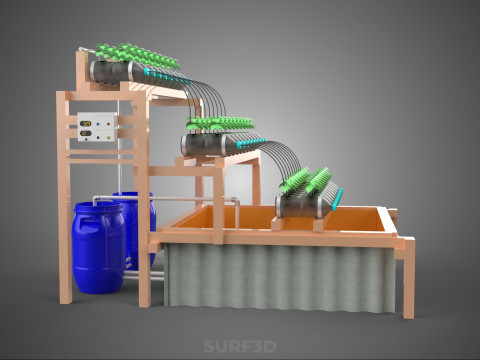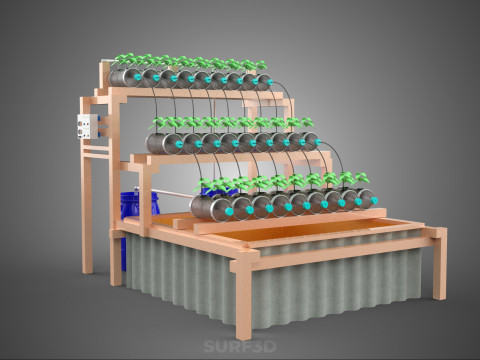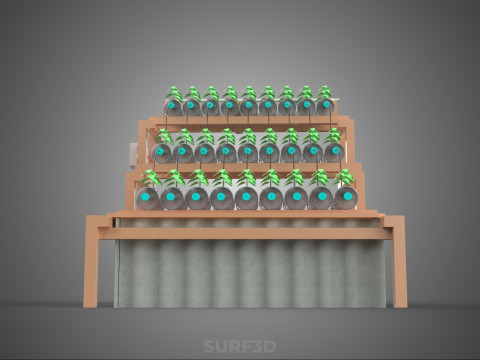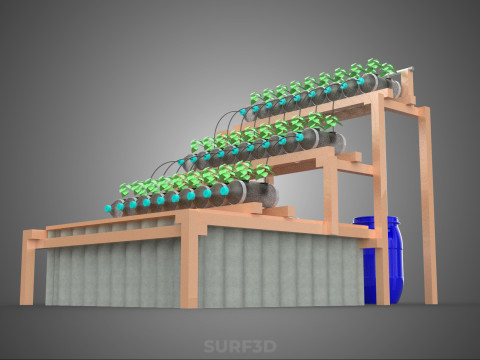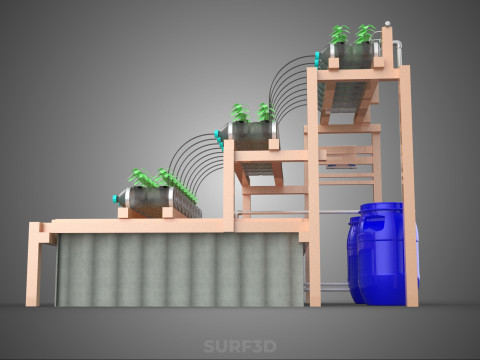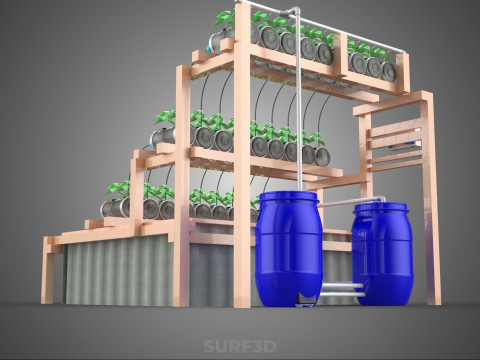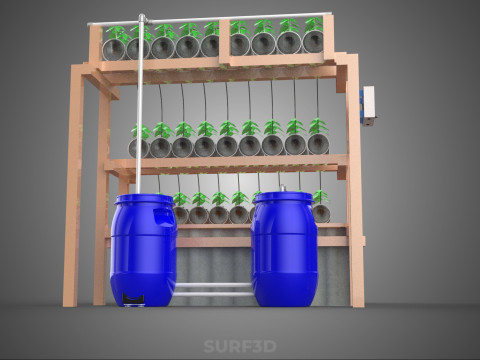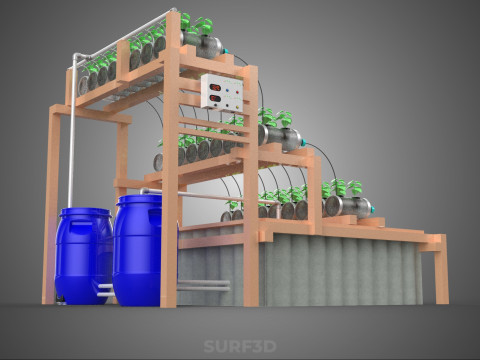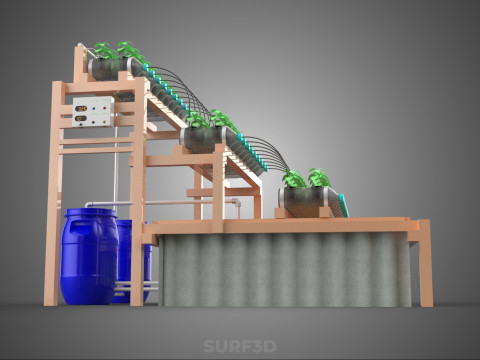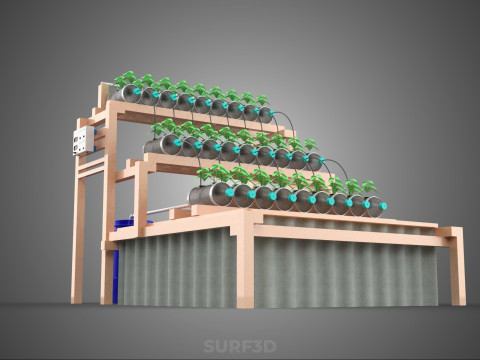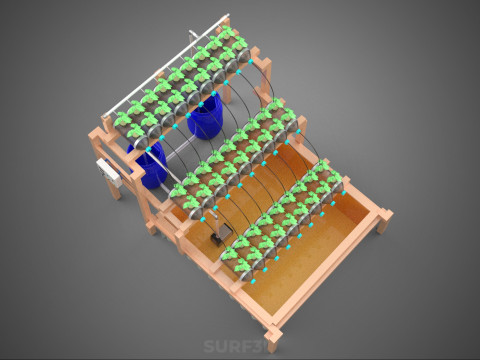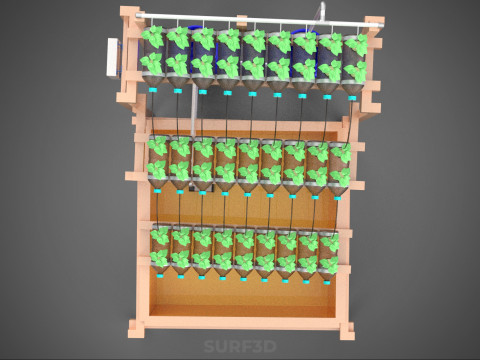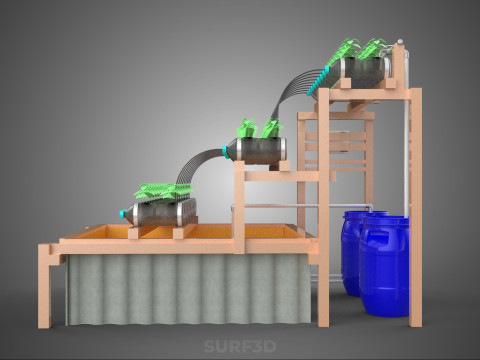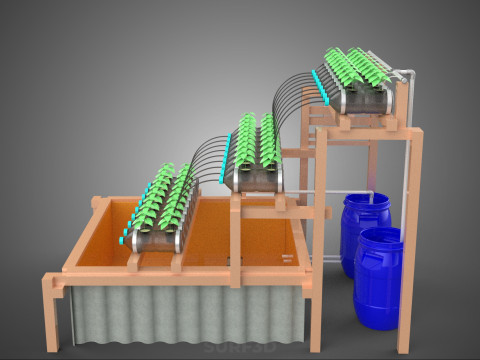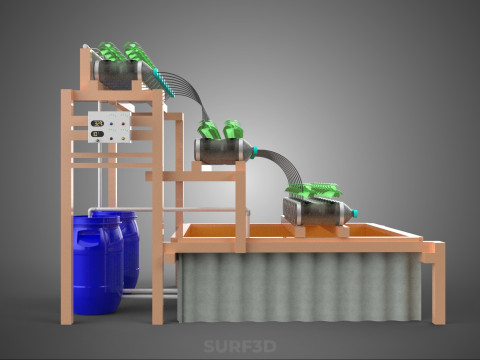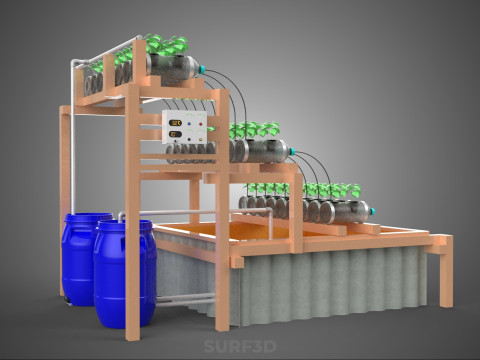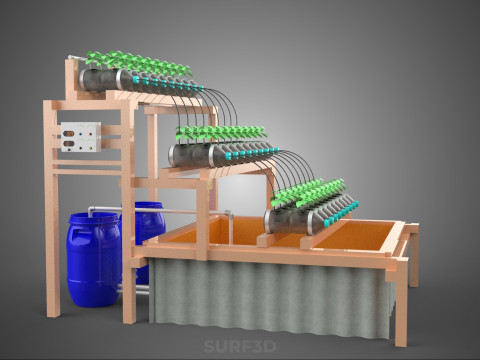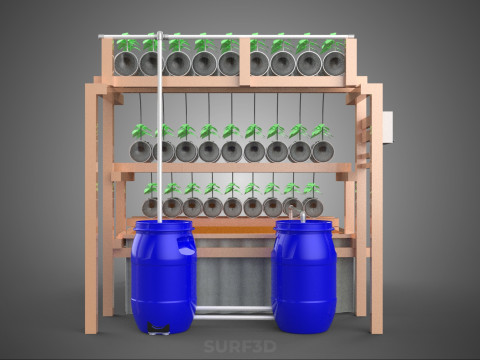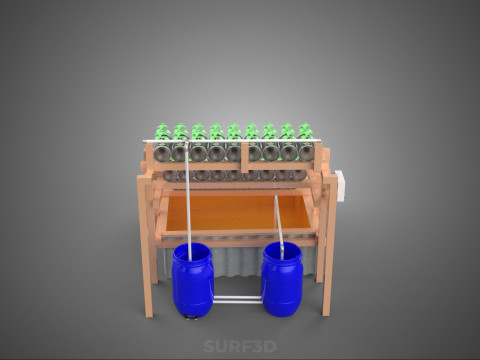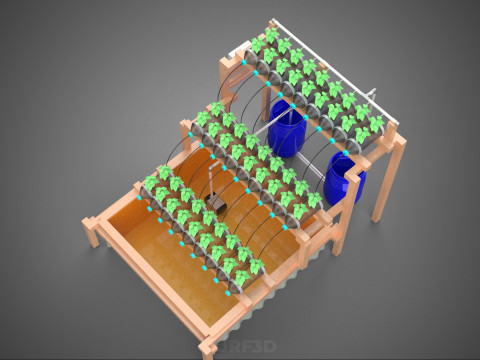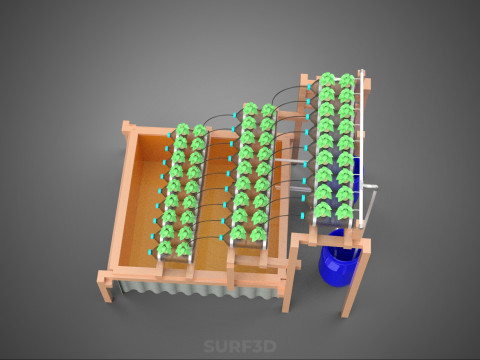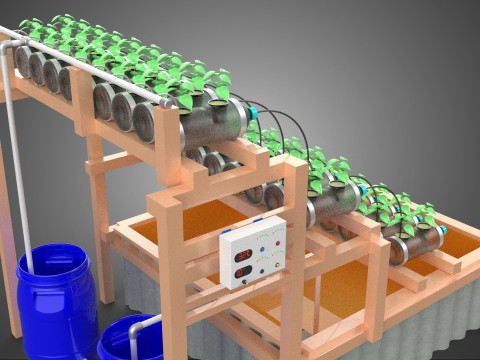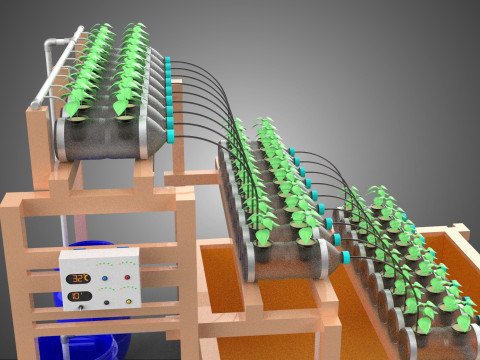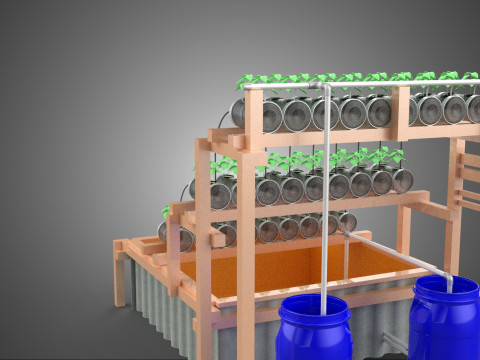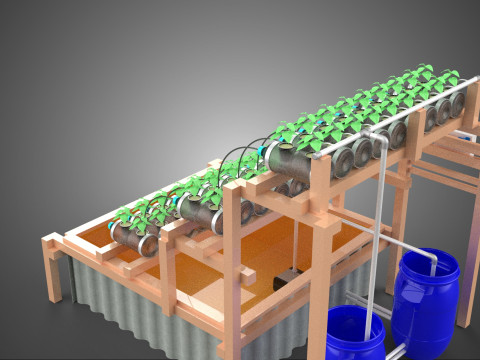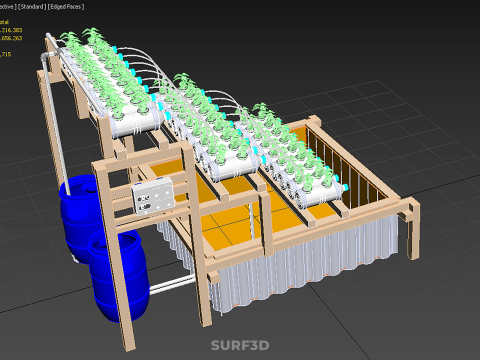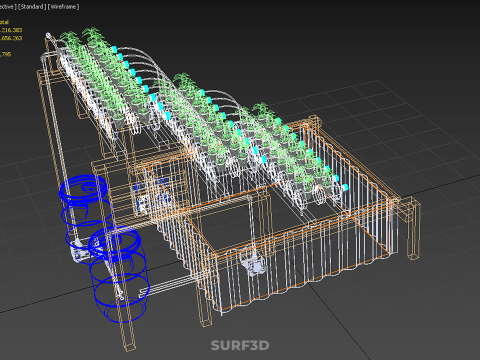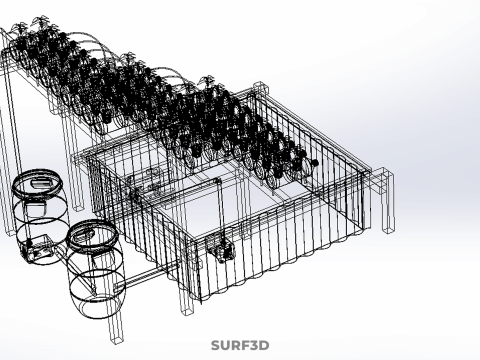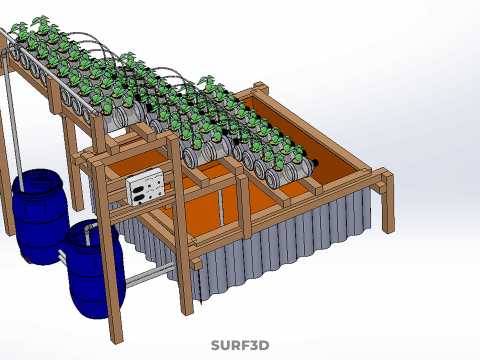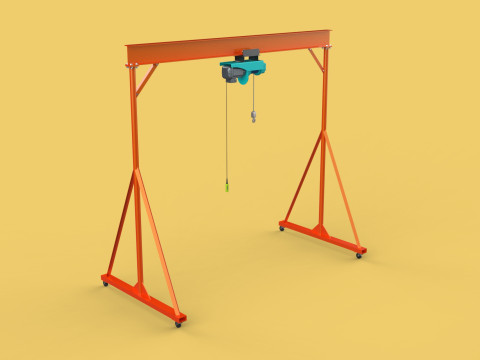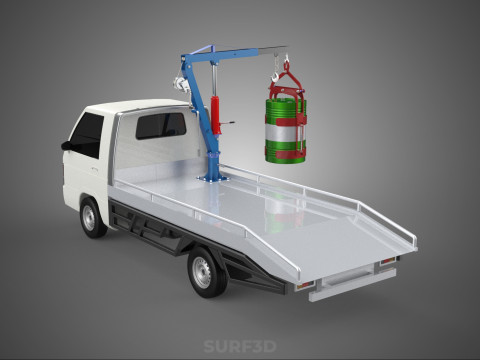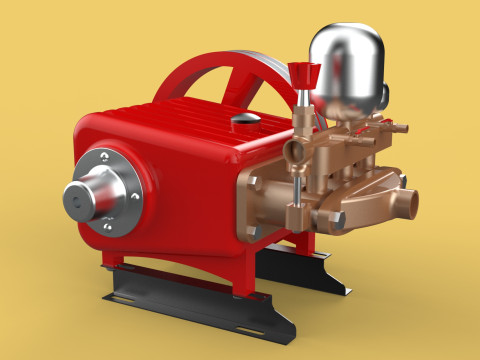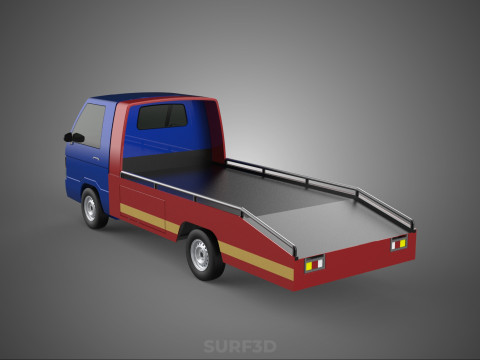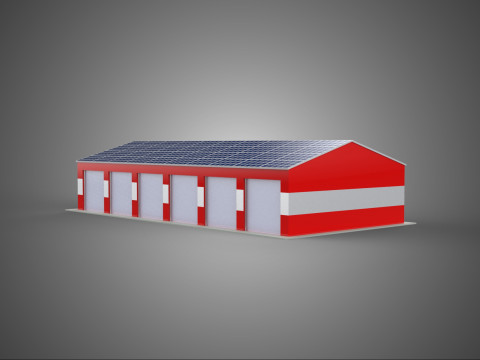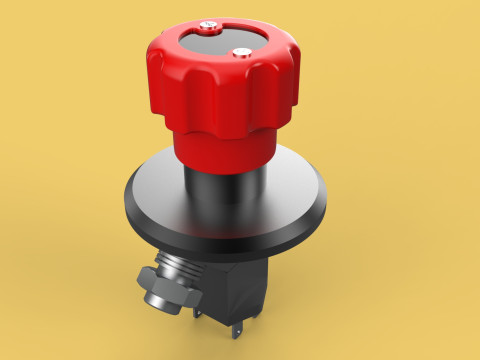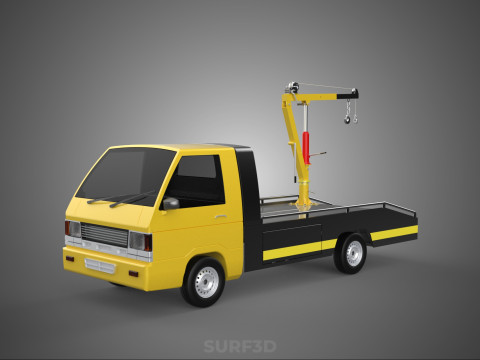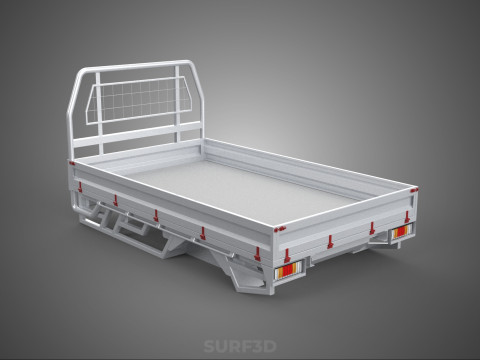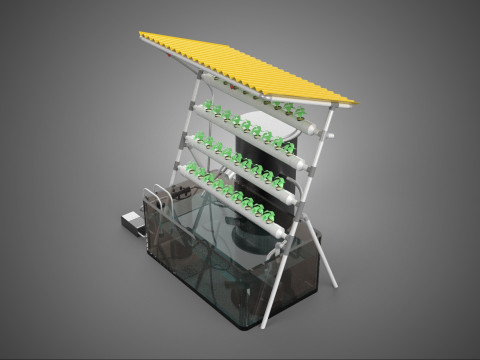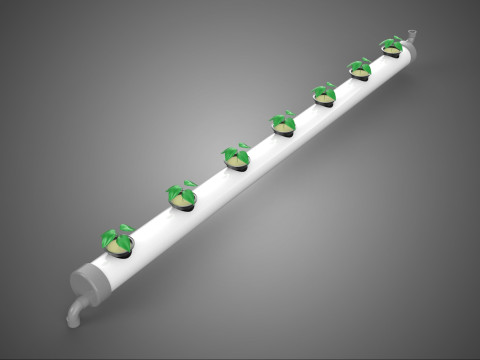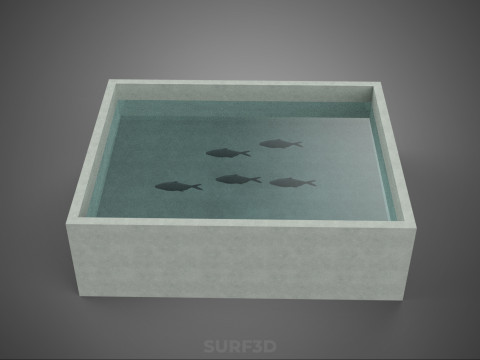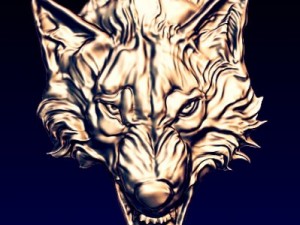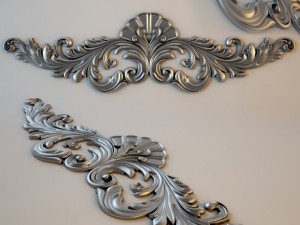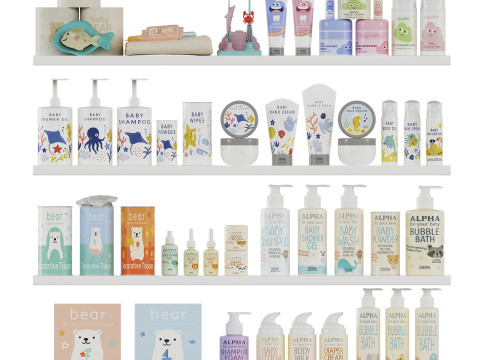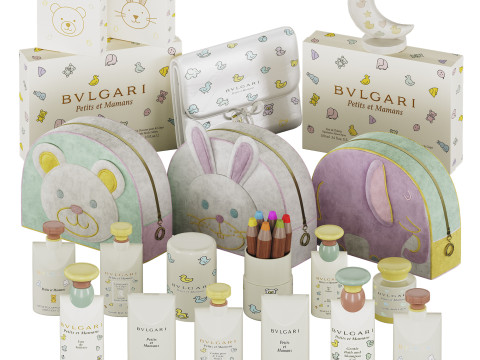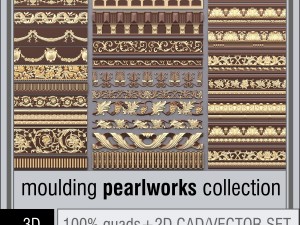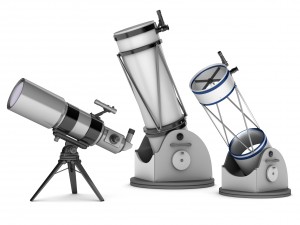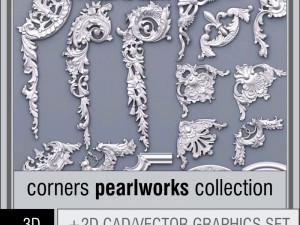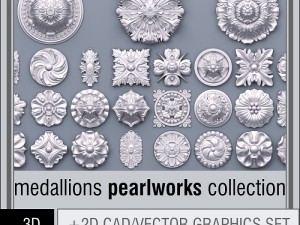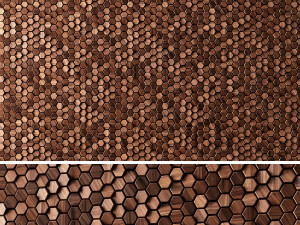IOT CONTROL ГІДРОПОНІЧНИЙ ЗАВОД ПЛАСТИКОВИЙ КОНТЕЙНЕР ДЛЯ ВОДИ СТАВОК 3D Модель
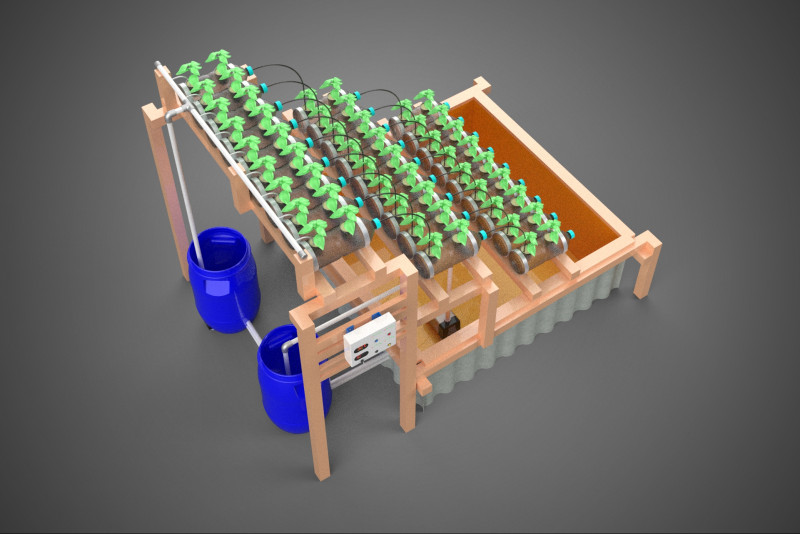
- Доступні формати: Collada (.dae) 30.81 MBSTEP (.step) 1.54 MBStereolithography (.stl) 34.38 MBWavefront OBJ (.obj) 25.10 MBBlender3D (.blend) 30.55 MBACIS(.sat) 22.57 MBGLB (.glb / .gltf) 13.80 MBIGES (.iges) 1.85 MBSketchUp (.skp) 4.70 MB3D Studio (.3ds) 9.00 MBAutodesk FBX (.fbx) 50.46 MBAutodesk 3DS MAX (.max) 66.17 MBRhinoceros (.3dm) 8.63 MBAutodesk AutoCAD (.dwg) 15.94 MB
- Полігони:2216383
- Вершини:1656263
- Анімована:No
- Текстури:No
- Скелет:No
- Матеріали:
- Лоу-полі:No
- Колекція:No
- UVW зображення:No
- Плагіни:No
- Готовність до друку:No
- 3D Скан:No
- Зміст для дорослих:No
- ШІ Навчання:No
- Геометрія:Poly NURBS
- Розгорнуті UVs:Unknown
- Перегляди:571
- Дата: 2025-09-16
- ID Товару:599256
IOT CONTROL ГІДРОПОНІЧНИЙ ЗАВОД ПЛАСТИКОВИЙ КОНТЕЙНЕР ДЛЯ ВОДИ СТАВОК 3D Модель dae, step, stl, obj, blend, sat, glb, iges, skp, 3ds, fbx, max, 3dm, dwg, від surf3d
High-quality 3D assets at affordable prices — trusted by designers, engineers, and creators worldwide. Made with care to be versatile, accessible, and ready for your pipeline.
Included File Formats
This model is provided in 14 widely supported formats, ensuring maximum compatibility:
• - FBX (.fbx) – Standard format for most 3D software and pipelines
• - OBJ + MTL (.obj, .mtl) – Wavefront format, widely used and compatible
• - STL (.stl) – Exported mesh geometry; may be suitable for 3D printing with adjustments
• - STEP (.step, .stp) – CAD format using NURBS surfaces
• - IGES (.iges, .igs) – Common format for CAD/CAM and engineering workflows (NURBS)
• - SAT (.sat) – ACIS solid model format (NURBS)
• - DAE (.dae) – Collada format for 3D applications and animations
• - glTF (.glb) – Modern, lightweight format for web, AR, and real-time engines
• - 3DS (.3ds) – Legacy format with broad software support
• - 3ds Max (.max) – Provided for 3ds Max users
• - Blender (.blend) – Provided for Blender users
• - SketchUp (.skp) – Compatible with all SketchUp versions
• - AutoCAD (.dwg) – Suitable for technical and architectural workflows
• - Rhino (.3dm) – Provided for Rhino users
Model Info
• - All files are checked and tested for integrity and correct content
• - Geometry uses real-world scale; model resolution varies depending on the product (high or low poly)
• • - Scene setup and mesh structure may vary depending on model complexity
• - Rendered using Luxion KeyShot
• - Affordable price with professional detailing
Buy with confidence. Quality and compatibility guaranteed.
If you have any questions about the file formats, feel free to send us a message — we're happy to assist you!
Sincerely,
SURF3D
Trusted source for professional and affordable 3D models.
More Information About 3D Model :
An "IOT CONTROL HYDROPONIC PLANT PLASTIC WATER BOTTLE CONTAINER POND" refers to a compact, technologically integrated, and environmentally conscious cultivation system designed for growing plants without soil. This innovative approach leverages recycled plastic water bottles as the primary structural and containment units for nutrient solutions, while integrating Internet of Things (IoT) technology for automated monitoring and control of the growing environment. The term "pond" in this context typically denotes the contained reservoir of nutrient solution, which can be a single modified bottle or an interconnected array of bottles functioning as a collective water body for the plants' root systems.
**Components and Design Principles:**
1. **Structural Container (The "Pond"):** The core physical component consists of repurposed polyethylene terephthalate (PET) plastic water bottles. These bottles are modified through cutting, drilling, and other adaptations to serve as reservoirs for the nutrient solution and to securely hold the plants. Common modifications include:
* **Deep Water Culture (DWC) Setup:** The upper section of a bottle might be inverted into the lower section, holding a net pot with a plant, allowing its roots to immerse directly into the nutrient solution below.
* **Wick System:** A wicking material draws nutrient solution from the bottle reservoir up to the plant's root zone, which is housed in a separate medium.
The "pond" aspect may also refer to multiple such bottle units being connected to share a common nutrient solution supply or for collective monitoring. Given the translucent nature of most plastic bottles, measures such as painting or wrapping are often employed to block light and prevent algae growth in the nutrient solution.
2. **Hydroponic System:** The method of growing plants without soil. Common techniques adapted for this small scale include:
* **Deep Water Culture (DWC):** Plant roots are submerged in an aerated nutrient solution. An air pump and air stone are typically used to provide oxygen to the roots, preventing root rot and promoting nutrient uptake.
* **Wick System:** A passive system where a wick (e.g., felt, nylon rope) draws nutrient solution from the reservoir into the growing medium surrounding the plant roots.
A soilless growing medium such as rockwool, coco coir, clay pebbles (hydroton), or perlite is used to support the plant and provide initial anchorage.
3. **Nutrient Solution:** A carefully balanced, water-soluble blend of essential macro and micronutrients required for plant growth. The composition and concentration of this solution are critical for plant health and yield.
4. **IoT Control System:** This is the intelligent core that enables automation and remote management. Key components include:
* **Microcontroller:** Devices like ESP32, ESP8266, or Arduino with Wi-Fi modules serve as the central processing unit, collecting data and issuing commands.
* **Sensors:**
* **pH Sensor:** Monitors the acidity or alkalinity of the nutrient solution, crucial for nutrient availability.
* **Electrical Conductivity (EC) Sensor:** Measures the concentration of dissolved nutrients in the solution.
* **Water Level Sensor:** Detects the volume of nutrient solution, triggering alerts or automated refilling.
* **Temperature Sensor (Air/Water):** Monitors ambient and solution temperatures.
* **Humidity Sensor:** Measures air moisture levels.
* **Actuators:**
* **Dosing Pumps:** Precisely add pH adjusters (acid/base) or concentrated nutrient solutions to maintain optimal levels.
* **Water Pumps:** For circulation, refilling, or drainage.
* **Air Pump:** Provides aeration to DWC systems.
* **LED Grow Lights:** Controlled to simulate day/night cycles and provide optimal light spectrum for photosynthesis.
* **Connectivity:** Wi-Fi or Bluetooth modules enable data transmission to a cloud-based platform or a local server.
* **Software and User Interface:** Cloud services (e.g., Blynk, Adafruit IO, custom web servers) or mobile applications provide dashboards for real-time data visualization, historical data logging, alerts, and remote control capabilities.
**Principle of Operation:**
The system operates by continuously monitoring key environmental parameters relevant to plant growth. Sensors collect data (e.g., pH, EC, temperature, water level), which is transmitted via the microcontroller to a remote server or cloud platform. Based on pre-programmed thresholds and algorithms, the IoT system can automatically activate actuators. For instance, if the pH level deviates from the optimal range, a dosing pump will add the appropriate pH adjuster. Similarly, if EC drops, nutrient concentrates can be added. Grow lights can be automatically switched on/off according to a set schedule. Users can monitor the system's status, receive alerts, and adjust parameters remotely through a user-friendly interface on a smartphone or computer, thereby optimizing growing conditions and minimizing manual intervention.
**Advantages:**
* **Sustainability:** Promotes upcycling of plastic waste, reducing landfill burden. Hydroponics inherently uses significantly less water than traditional soil-based agriculture.
* **Space Efficiency:** Its compact nature makes it ideal for urban environments, small apartments, balconies, or educational settings.
* **Resource Optimization:** Precise control over nutrient delivery and environmental factors leads to efficient resource utilization and potentially higher yields.
* **Automation and Convenience:** Reduces the labor intensity of gardening, making plant cultivation more accessible and less time-consuming.
* **Educational Value:** Serves as an excellent platform for learning about sustainable agriculture, IoT technology, electronics, and plant science.
* **Cost-Effectiveness:** Utilizing repurposed materials can significantly reduce the initial setup cost, making it accessible for hobbyists and DIY enthusiasts.
Потрібно більше форматів?
Якщо вам потрібен інший формат, будь ласка, зробіть запит за допомогою тікета підтримки. Ми можемо конвертувати 3D моделі: .stl, .c4d, .obj, .fbx, .ma/.mb, .3ds, .3dm, .dxf/.dwg, .max. .blend, .skp, .glb. Ми не конвертуємо 3d сцени і такі формати, як .step, .iges, .stp, .sldprt тощо!Інформація про використання
IOT CONTROL ГІДРОПОНІЧНИЙ ЗАВОД ПЛАСТИКОВИЙ КОНТЕЙНЕР ДЛЯ ВОДИ СТАВОК - Ви можете використовувати цю безкоштовну 3D модель як для особистих, так і для комерційних цілей відповідно до Базової або Розширеної ліцензії.Базова ліцензія охоплює більшість стандартних випадків використання, включаючи цифрову рекламу, проекти дизайну та візуалізації, бізнес-акаунти в соціальних мережах, нативні додатки, веб-додатки, відеоігри та фізичні або цифрові кінцеві продукти (як безкоштовні, так і продавані).
Розширена ліцензія включає всі права, надані за Базовою ліцензією, без обмежень використання, та дозволяє використовувати 3D модель у необмеженій кількості комерційних проектів на умовах безкоштовних роялті.
Детальніше


 English
English Español
Español Deutsch
Deutsch 日本語
日本語 Polska
Polska Français
Français 中國
中國 한국의
한국의 Українська
Українська Italiano
Italiano Nederlands
Nederlands Türkçe
Türkçe Português
Português Bahasa Indonesia
Bahasa Indonesia Русский
Русский हिंदी
हिंदी